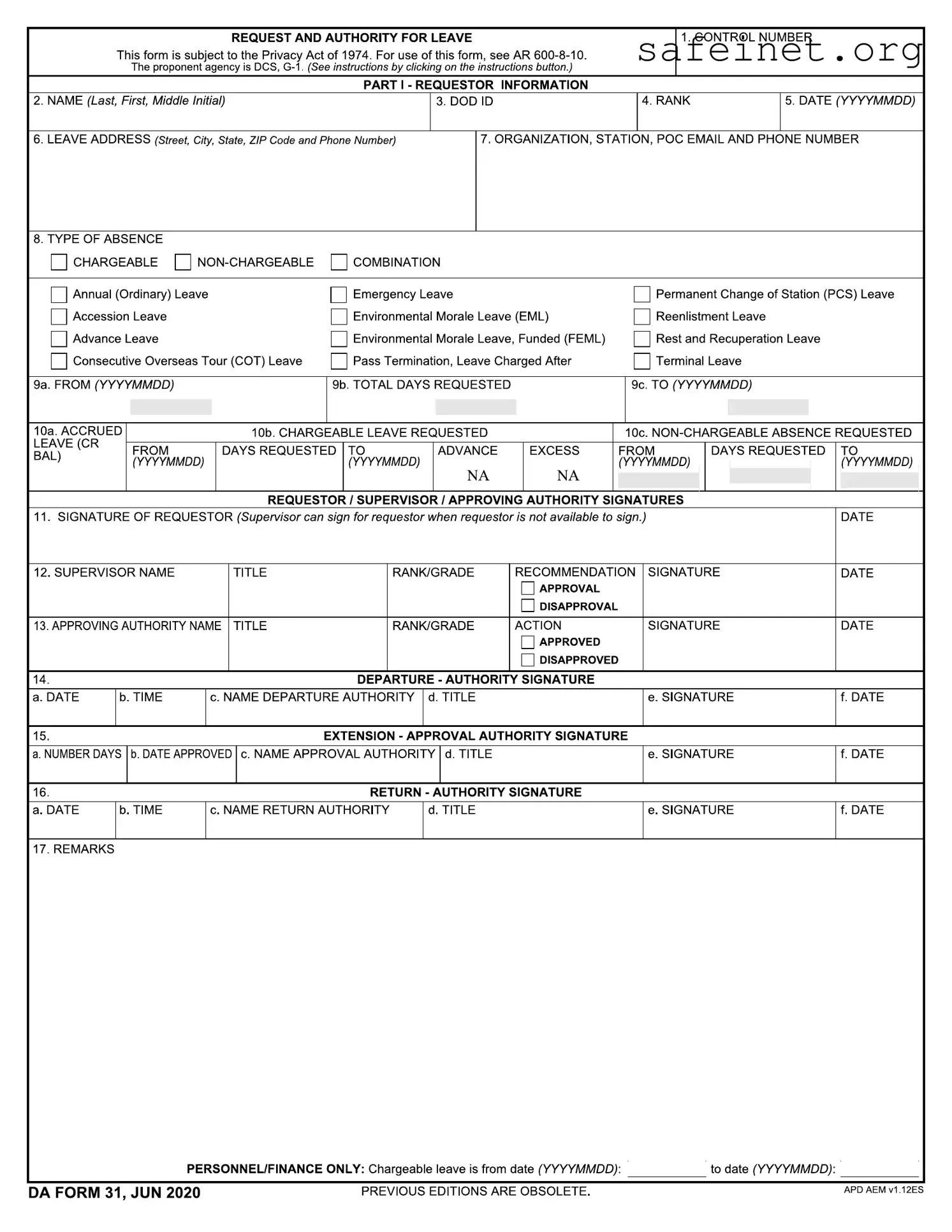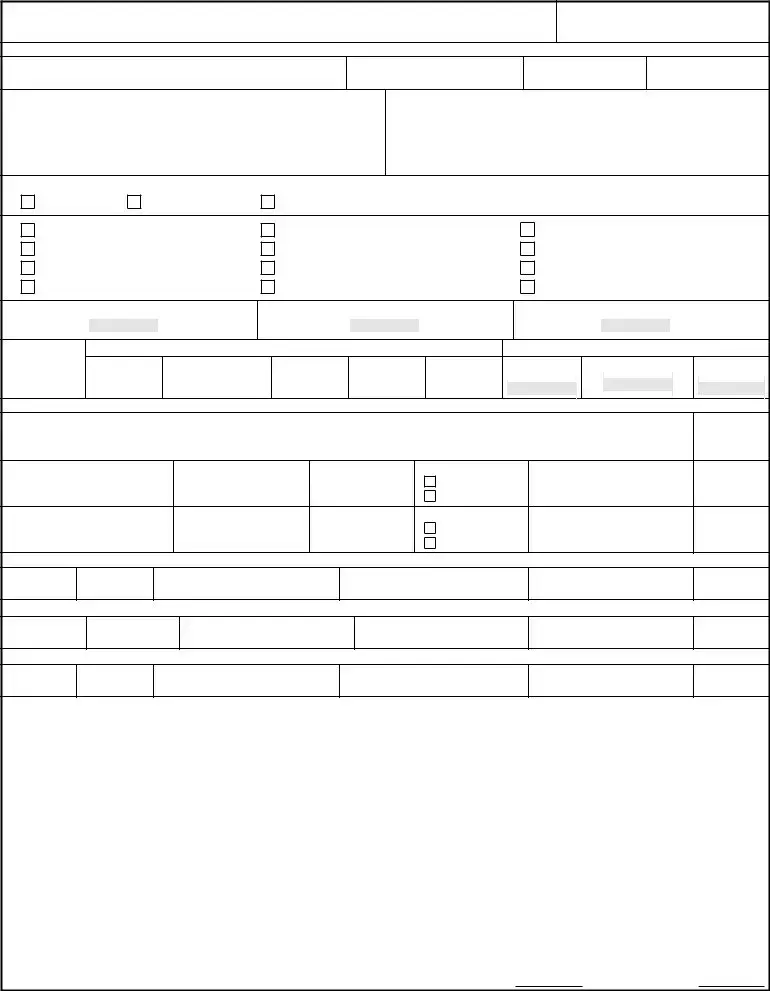The DA Form 5018, also known as the "Leave Request Form," offers a streamlined approach for military personnel to request annual leave. Similar to the DA Form 31, the 5018 allows service members to specify the type of leave they wish to take, the dates, and the approval processes. What sets it apart is its focus on standard annual leave rather than the varied types available under the DA Form 31. By making leave requests uniform, it helps to establish clearer records for accounting purposes.
The Standard Form 1150 (SF 1150), "Leave Adjustment Form," is another document that can resemble the DA Form 31 in its intent to manage leave. This form is used specifically to request changes to leave status or make adjustments to leave balances. While the DA Form 31 initiates requests and lays out the authority needed for taking leave, the SF 1150 provides a mechanism for correcting or adjusting previously documented leave actions. This linkage ensures that personnel records remain accurate and up-to-date.
Form DD 149, known as the "Application for Correction of Military Record," shares similarities with the DA Form 31 in that both deal with the administrative processes of military personnel. While the DA Form 31 focuses on requesting leave, the DD 149 is designed for service members who want to amend their military records regarding such requests. This document can be essential for those who seek to rectify past leave decisions or document discrepancies related to their leave status.
The DA Form 108, or "Application for Non-Chargeable Leave," serves as a variant of the DA Form 31 by allowing for requests for non-chargeable leave. This type of leave does not count against a soldier's annual leave allotment and is distinct from the chargeable absences listed in the DA Form 31. The direct focus on non-chargeable leave helps to clarify which types of absences require different handling, maintaining transparency and proper documentation throughout.
Another document, the DA Form 4187, titled "Personnel Action," can also be related to the DA Form 31. Used for various personnel changes, the DA Form 4187 can facilitate requests for types of leave similar to those articulated on the DA Form 31. Its broader scope encompasses numerous administrative actions but functions as a catch-all form for many personnel requests, including leave, promotions, and changes in duty assignments.
Form AF Form 988, "Leave Request/Authorization," is used by Air Force personnel in a manner akin to the DA Form 31. This form is designed for members of the Air Force to formally request, track, and authorize leave. The similarities lie in the detailed nature of the requests, addressing types of leave, as well as allowing supervisors and approving authorities to endorse or deny those requests. Both documents prioritize clear communication and record-keeping regarding military leave.
Form SF 71, "Request for Leave," parallels the DA Form 31 in the Army in that it serves to request annual leave with similar documentation requirements. Civilian employees within federal agencies utilize the SF 71, mirroring the leave process for military personnel. Like the DA Form 31, it allows for detailing the type of leave, the requested dates, and obtaining necessary approvals, simplifying the process of leaves for both military and civilian employees.
The DA Form 2028, titled "Recommended Changes to Publications," is somewhat distant but still relevant to the DA Form 31's document process. This form allows military personnel to propose updates or modifications to regulatory publications, including leave-related forms. While it doesn’t deal directly with leave requests, it can be a useful tool for those aiming to improve the efficiency or clarity of the leave request process as outlined in the DA Form 31.
Finally, the OPM Form 71, "Request for Leave or Approved Absence," serves a similar purpose for federal employees, providing yet another option for leave requests. While not military-specific, its structure and intent reflect the same goals as the DA Form 31: to formalize requests for leave, specify types and dates, and ensure proper administrative steps are followed. This connection illustrates how similar processes can bridge various types of federal service.

